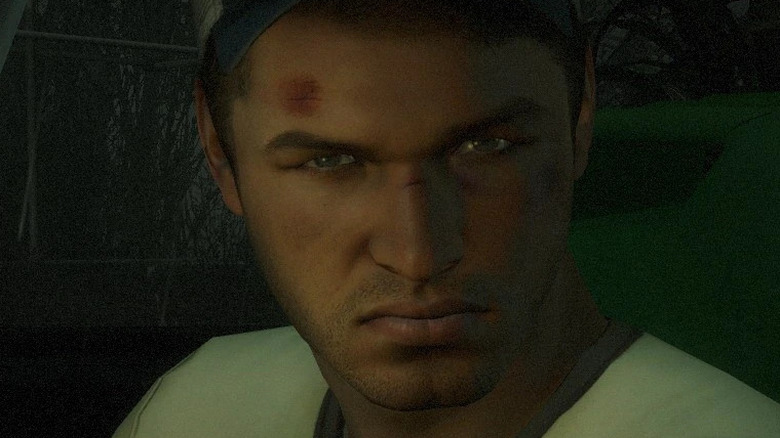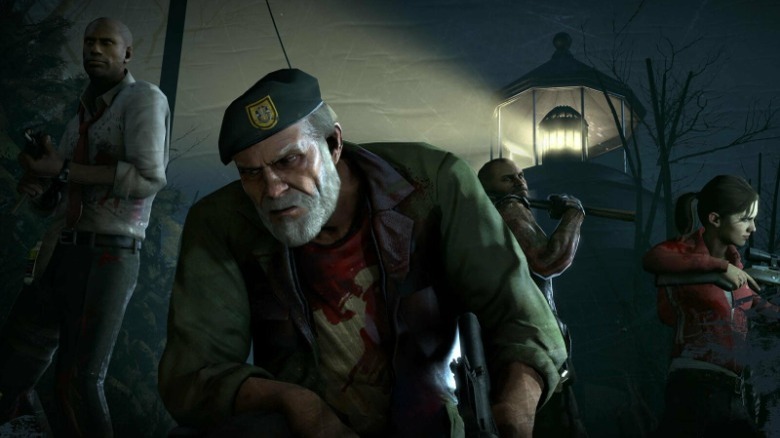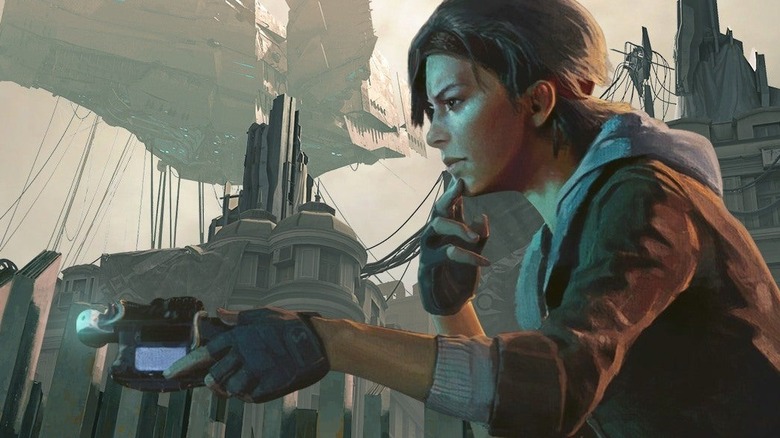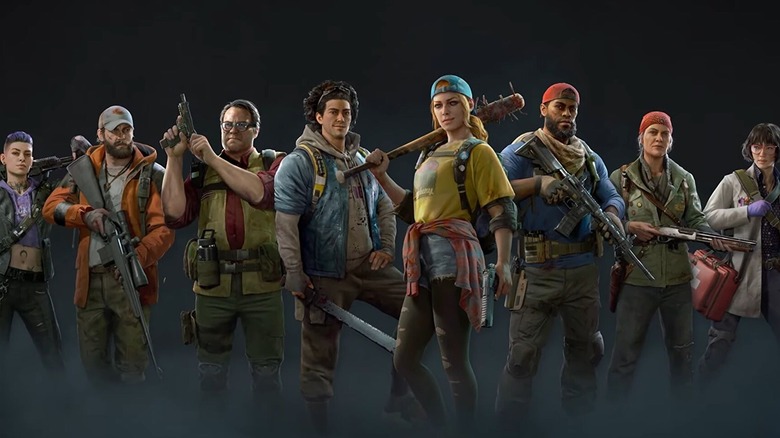Why Valve Never Released Left 4 Dead 3
Valve, a longstanding icon in PC gaming, was once better known for its generation-defining games in the "Half Life," "Team Fortress," and the "Left 4 Dead" series. More recently — well, more like the last decade or so — Valve shifted its focus from game development to other pursuits. Since 2013, the "Half Life: Alyx" VR game and the DOTA 2 card game "Artifact" are really the only big titles the company has shipped, and in 2023 Valve is much better known for running Steam and for the handheld Steam Deck than its games.
Fans have wondered for years what happened some of Valve's most famous series. There was never a "Team Fortress 3," despite the overwhelming success of the original, and "Half-Life" fans become more ravenous for a sequel to "Half-Life 2" every year. The company has a reputation for not being able to count to three — it's never released a game with the number 3 in the title, "Counter Strike: Global Offensive" doesn't count. Valve has, however, made plenty of spin-offs and DLC episodes for almost all of its major games — except for "Left 4 Dead."
The "Left 4 Dead" games were innovative in their time, but since "Left 4 Dead 2" released in 2009 there has been nary a peep from the franchise, save for references in other games. Thanks in large part to Geoff Keighley's exposé "Half-Life: Alyx – The Final Hours" fans learned two major factors for why "Left 4 Dead 3" won't happen: work on Source 2, and the over-ambitious plans the team had for "Left 4 Dead 3."
Valve had big plans for Left 4 Dead 3 - too big, as it turned out
Though "Left 4 Dead 3" never came out, confirmed and unconfirmed leaks of the game over the years paint a pretty good picture of what fans could have expected from it. According to "Half Life: Alyx – The Final Hours" an interactive book that goes behind the scenes into Valve's recent history, "Left 4 Dead 3" was just starting to be developed in 2013 by a small staff of less than 30. The game would have been set in Morocco and featured an open world, and there would have been way, way more zombies than the original two "Left 4 Dead" games — according to PCGamesN, it was set to display hundreds of zombies on screen at once.
A leak from 2014 gave fans a next-gen look at "Left 4 Dead 3" thanks to a prototype Source 2 image, but by then the project had already started to evaporate. Geoff Keighley explains that Source 2 and "Left 4 Dead 3" were in development at the same time, but the ambitious goals the team had for this follow-up proved to be too much for the engine to handle.
In "Half Life: Alyx – The Final Hours," Valve developer David Spreyer said that these projects were delayed because Source 2 wasn't ready. Reportedly, it was difficult to make a first-person shooter in the Source 2 engine at that point in development, and basic functions like lighting and saving were in a dire state, too.
Work on Source 2 superseded not only Left 4 Dead 3, but also Half Life 3 and others
With Source 2, the company looked to give its foundations an enormous — and much needed — facelift. The original Source engine was once one of gaming's most recognized engines in its heyday, used not only for Valve's in-house titles but also for popular games like "The Stanley Parable," "Dark Messiah of Might and Magic," and "Vampire: The Masquerade – Bloodlines." Even "Apex Legends" can trace its roots to the Source engine, as it builds on a modified version of the "Titanfall 2" engine, which itself evolved from the Source engine that ran "Titanfall."
Needless to say, Source was a pretty big deal, and Valve wanted a follow-up that pushed the boundary even further. So it went all in. Source 2 development began alongside several games for the engine, an unnamed "Half-Life" spin-off, the oft rumored, never confirmed "Half Life 3," an RPG inspired by "Monster Hunter" and "Dark Souls," and of course "Left 4 Dead 3."
Eventually, cracks started to show as technical issues continued to build, so development on these projects was put on an indefinite hiatus so work on the engine could be finished. Eventually, these games evaporated over time as Valve's focus shifted, and plans for "Left 4 Dead 3" evaporated too. "A huge amount of tech was needed, and we honestly didn't get very far," Spreyer said, referring to "Left 4 Dead 3" specifically (via PCGamesN). Fans never got "Left 4 Dead 3" proper, but we do have a spiritual successor: "Back 4 Blood."
The closest thing we have is Back 4 Blood, a spiritual successor
In early 2008, Turtle Rock Studios was purchased by Valve just before it finished development on "Left 4 Dead," while "Left 4 Dead 2" was developed in-house. Renamed Valve South, developers at Turtle Rock Studios became dissatisfied with the lack of communication and collaboration between the teams, caused in large part by the distance between the studios — Seattle to Southern California is quite a drive.
The studio split, gained its old name back, and eventually started to work on "Back 4 Blood," a spiritual successor to "Left 4 Dead" from much of the original team. It wasn't an instant classic like its predecessors, but most critics agree it's a worthy, if flawed, "Left 4 Dead" style experience. "Left 4 Dead" and "Left 4 Dead 2" remain some of the most critically praised zombie games ever made, and a vibrant modding community has kept players coming back again and again over the years.
But with no plans at Valve to make another "Left 4 Dead" game — at least, none that fans know of — "Back 4 Blood" is the closest thing to "Left 4 Dead 3" for the foreseeable future. Still, Source 2 eventually released, and Valve recently confirmed it is still working on new games for the future. The door may not be closed on more "Half Life," "Team Fortress," "Counter Strike," or "Left for Dead" games forever, but no one knows when Valve may eventually return to these foundational franchises again.




